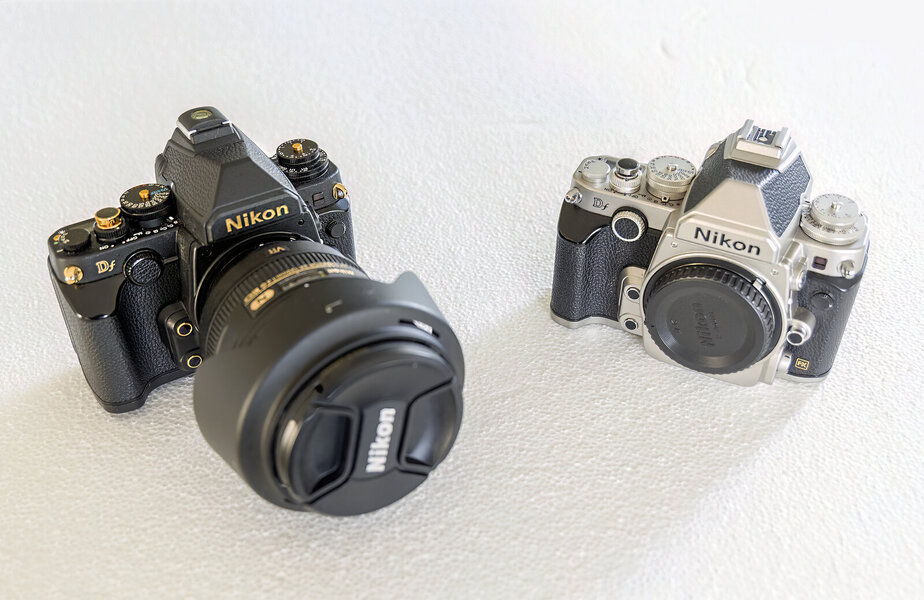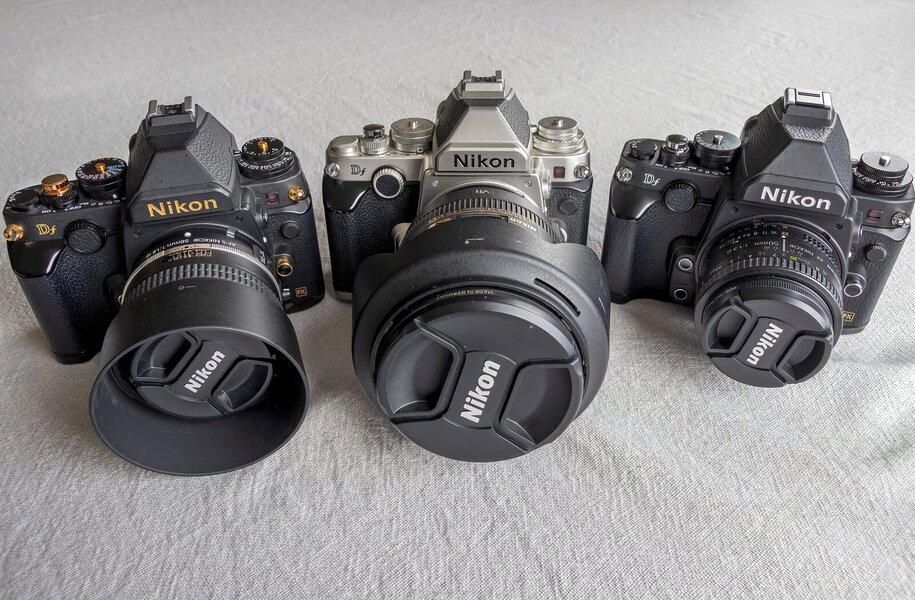Tronhard
Member
I began my photographic career about 43 years ago, and at that time I was shooting with a combination of Nikon and Canon SLRs - the Nikon FM, Nikon F3 and Canon A-1: all brilliant cameras.
I was initially living in New Zealand, but my work took me around the world: shooting a wide range of subjects, but predominantly scenic, wildlife and travel - selling transparencies to stock agencies, for publications, corporates, and in exchange for travel and equipment benefits.
I switched to digital around the turn of the turn of the century, but I still retain an F3 and FM body for old time's sake - basically as keepsakes. I eventually returned back to NZ, where I am now retired.
When the Nikon Df came out, it was about the time I retired, and the attraction was immediate and profound. This camera took me back to the interface I had used when I started, yet offered many of the benefits of a top-end DSLR. I totally understood the reason Tetsuro Goto created this as his legacy design before he retired from Nikon: given that his early creations were the very cameras I started with.
The thing was, most people who reviewed it didn't understand it - they saw it in the context of contemporary DSLRs rather than the shooting experience with who used legacy SLRs. The whole thing about the Df was how one uses it in the context of those old cameras. It not only harkens back to the legacy days, but that the interface encourages one to take time, to enjoy the taking of an image as a process and an occasion. It's a bit like why people still enjoy playing vinyl records...
It recognizes that digital photography has other elements that film did not have and it has tried to deal with those without losing the analogue interface. The experience of using film required a discipline of approach that one does not have to have today and what some regard as shortcomings, I see as a recreation of those conditions, and I'm fine with it. The clues to the fusion philosophy are in the whole design ethic:
1. The ability to use Non-AI lenses
2. The use of analogue dials controlling the essentials
3. The fabulous sensor, upgraded with a new processor to improve low-light/high ISO performance. It encourages you to use available light and fast prime lenses.
4. The removal of video to concentrate on stills, making the camera more compact.
Let me address some of the criticisms I have seen hurled at this:
FIRST: It's a STILL photographers' camera - that deserves no apology, there are many DSLRs out there that do video just fine.
SECOND: It doesn't have a built-in flash. Neither did the film cameras, but it has a perfectly serviceable flash hot shoe with all the capabilities of any Nikon camera built-in.
THIRD: The unit has fewer focusing points than top end contemporaries. It has a lot more than those film cameras of the late 1970's and early 1980's did, and it works fine if you work with it.
FOURTH: There is only one card slot. Film cameras could only hold one film at a time. That generated a discipline of being sparing and very careful with one's settings and composition. I still do that today with digital and shoot a lot less than my digital native contemporaries who only knew the DSLR or MILC environments.
FIFTH: The controls have lock on them - yep, and so did most of the film cameras, it's about learning to get used to them, once you do it's automatic.
There is a saying that there is a market for every product and a product for every market. So if one wants video, or to shoot sports or wildlife at very high shutter speeds, then move on and buy a camera designed for those purposes - don't attack a camera that was never meant to fulfil them. This is not so much a modern tool as an expression of a love affair with a style of photography and an era.
I love the brilliant low-light performance of the FF sensor from the D4, tweaked for further sensitivity. I have one in silver, and a rare, limited edition (Japan release only) black and gold unit as well.
With the arrival of the Zf, I shall doubtless get one of them, but I shall never sell my Df cameras.
I was initially living in New Zealand, but my work took me around the world: shooting a wide range of subjects, but predominantly scenic, wildlife and travel - selling transparencies to stock agencies, for publications, corporates, and in exchange for travel and equipment benefits.
I switched to digital around the turn of the turn of the century, but I still retain an F3 and FM body for old time's sake - basically as keepsakes. I eventually returned back to NZ, where I am now retired.
When the Nikon Df came out, it was about the time I retired, and the attraction was immediate and profound. This camera took me back to the interface I had used when I started, yet offered many of the benefits of a top-end DSLR. I totally understood the reason Tetsuro Goto created this as his legacy design before he retired from Nikon: given that his early creations were the very cameras I started with.
The thing was, most people who reviewed it didn't understand it - they saw it in the context of contemporary DSLRs rather than the shooting experience with who used legacy SLRs. The whole thing about the Df was how one uses it in the context of those old cameras. It not only harkens back to the legacy days, but that the interface encourages one to take time, to enjoy the taking of an image as a process and an occasion. It's a bit like why people still enjoy playing vinyl records...
It recognizes that digital photography has other elements that film did not have and it has tried to deal with those without losing the analogue interface. The experience of using film required a discipline of approach that one does not have to have today and what some regard as shortcomings, I see as a recreation of those conditions, and I'm fine with it. The clues to the fusion philosophy are in the whole design ethic:
1. The ability to use Non-AI lenses
2. The use of analogue dials controlling the essentials
3. The fabulous sensor, upgraded with a new processor to improve low-light/high ISO performance. It encourages you to use available light and fast prime lenses.
4. The removal of video to concentrate on stills, making the camera more compact.
Let me address some of the criticisms I have seen hurled at this:
FIRST: It's a STILL photographers' camera - that deserves no apology, there are many DSLRs out there that do video just fine.
SECOND: It doesn't have a built-in flash. Neither did the film cameras, but it has a perfectly serviceable flash hot shoe with all the capabilities of any Nikon camera built-in.
THIRD: The unit has fewer focusing points than top end contemporaries. It has a lot more than those film cameras of the late 1970's and early 1980's did, and it works fine if you work with it.
FOURTH: There is only one card slot. Film cameras could only hold one film at a time. That generated a discipline of being sparing and very careful with one's settings and composition. I still do that today with digital and shoot a lot less than my digital native contemporaries who only knew the DSLR or MILC environments.
FIFTH: The controls have lock on them - yep, and so did most of the film cameras, it's about learning to get used to them, once you do it's automatic.
There is a saying that there is a market for every product and a product for every market. So if one wants video, or to shoot sports or wildlife at very high shutter speeds, then move on and buy a camera designed for those purposes - don't attack a camera that was never meant to fulfil them. This is not so much a modern tool as an expression of a love affair with a style of photography and an era.
I love the brilliant low-light performance of the FF sensor from the D4, tweaked for further sensitivity. I have one in silver, and a rare, limited edition (Japan release only) black and gold unit as well.
With the arrival of the Zf, I shall doubtless get one of them, but I shall never sell my Df cameras.

- Canon - Canon EOS R6
- RF24-105mm F4 L IS USM
- 35.0 mm
- ƒ/4.5
- 1/50 sec
- Spot
- Auto exposure
- 1.7
- ISO 1000

